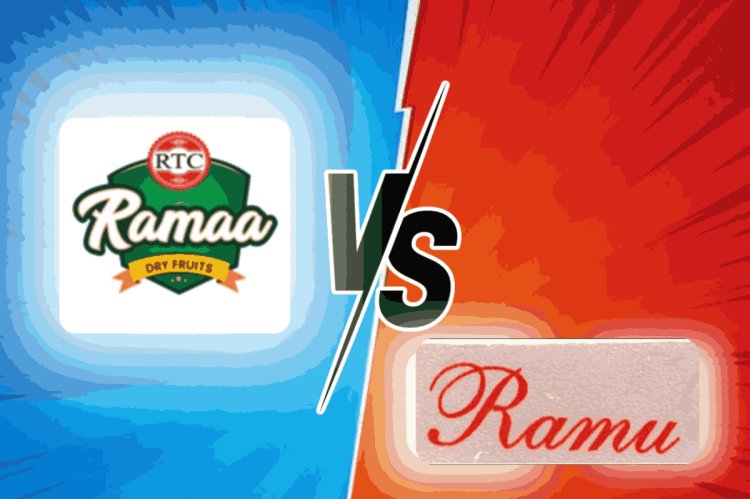DHANI AGGARWAL v. MAHESH YADAV & ORS.
This case involves a trademark dispute between Ms Dhani Aggarwal, the appellant, and the respondent over the similarity between their trademarks 'RAMU' and 'RAMAA'. The appellant contested an order by the Additional District Judge of Tis Hazari Courts, arguing that the two marks are phonetically similar and could cause confusion among consumers. The appellant sought to restrain the respondent from using any mark deceptively similar to their trademark 'RAMU'. The Delhi High Court ruled in favour of the appellant, emphasizing the importance of immediate action by the proprietor to protect their trademark rights. The respondent was restrained from using any deceptively similar mark during the pendency of the suit.

DHANI AGGARWAL v. MAHESH YADAV & ORS.
FAO-IPD 23/2021 & CM 2/2022, 4/2022, 47678-79/2019
Date of decision: 22.08.2022
BRIEF FACTS:
Ms. Dhani Aggarwal filed an appellant suit against the order passed by the Additional District Judge of Tis Hazari Courts in Delhi on 31st August 2019. The judge held that there was no similarity between the trademarks 'RAMU' and 'RAMAA'. The former is registered under the name of the appellant (plaintiff in this case), while the latter is registered under the name of the respondent (defendant in this case).
The judge allowed the respondents to use the trademark 'RTC RAMAA', but restrained them from using a similar outer trade dress/label/colour combination as the one used by the appellant on its products.
The appellant is unhappy with the ADJ's decision to lift the vacation of the temporary injunction on the respondents from using its mark 'RAMMA' and 'RAMMA MUNAKKA'.
CONTENTIONS OF APPELLANT
The appellant's legal representative has argued that the two marks under consideration, namely 'RAMU' (belonging to the appellant) and 'RAMAA' (belonging to the respondents), are phonetically similar. It has been stated that the appellant is the proprietor and prior user of the mark, having adopted it honestly and in good faith in 1995. The appellant is also the registered proprietor of the said mark in various forms and for various goods under Class 29.
Furthermore, the legal representative for the appellant has stated that the appellant was only made aware of the existence of the respondents/defendants in the case in the second week of February 2019. In addition, an application has been filed by the appellant seeking rectification of the mark in question, and the proceedings for the same are currently pending.
The legal representative has relied on the judgment of the Delhi High Court in the case of Century Traders v. Roshan Lal Duggar & Co., AIR 1978 Del 250, to argue that the prior user of a trademark takes precedence over its registration.
CONTENTION OF RESPONDENT
The argument put forth is that in the current scenario, the two marks being compared are distinct and dissimilar. This aspect has been duly acknowledged at first sight by the learned ADJ as well. Additionally, it is pointed out that the packaging of the respective products is also markedly different. As a result, there is no possibility of any confusion or deception arising due to the use of the mark 'RAMAA' or its packaging by the respondents. The source of the products is mentioned clearly and can be easily distinguished in the packaging utilized by the respondents, as per the submission made.
JUDGMENT
The Delhi High Court analysed and made findings based on the arguments made by both the appellant and respondent. The words ‘RAMU’ and ‘RAMAA’ are the main part of the two label marks and are similar both structurally and phonetically. This resemblance could cause confusion in the mind of a consumer who wants to purchase goods like dry fruits off the shelf. When determining whether a trademark is similar to another mark, the test of ‘trade connection’ should also be applied. In this case, the products of the appellant and the respondent are not so distinct that they cannot create any confusion in the minds of the consumers. The court thinks that the common purchasers who are aware of the mark of the appellant can easily be misguided into believing that the appellant has now expanded its business to other dry fruits. The appellant has filed a suit immediately on coming to know of the use of the respondent’s trademark ‘RAMAA’. So, it is not significant that the appellant failed to file an immediate opposition against the respondent’s trademark ‘RAMAA’. The proprietor has taken immediate action after knowing the use of the mark. It is not possible for one to pay attention to every advertisement of a mark of an opponent, and therefore, such a mark can proceed to registration. If the proprietor takes immediate action on knowing the use of the mark, it cannot be said that the proprietor has consented to the use of such a deceptively similar mark by their opponent. In Laxmikant Patel, it has been held that where a defendant has imitated or adopted the plaintiff’s distinctive trade mark or business name, the order may be of an absolute injunction that he would not use or carry out business under that name. Based on the above, the court sets aside the impugned order. The respondents are restrained by way of an ad-interim injunction from using, selling, soliciting, exporting, displaying, advertising, or marketing their product under the mark ‘RAMAA’, ‘RAMAA MUNAKKA’ label, or any other mark, which is deceptively similar to the appellant’s trade mark ‘RAMU’ during the pendency of the suit.
COURT ANALYSIS
The Delhi High Court ruled in favour of the appellant in a trademark infringement case against the respondent due to the structural and phonetic similarity between their trademarks. The court emphasized the importance of immediate action by the proprietor to protect their rights against imitation or adoption of their distinctive trademark. The respondent was restrained from using any mark deceptively similar to the appellant's trademark 'RAMU' during the pendency of the suit. The judgment reasserts the significance of protecting trademarks and preventing confusion in the marketplace, ultimately safeguarding the rights of the proprietors.












